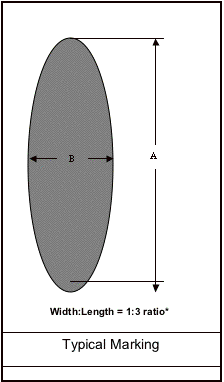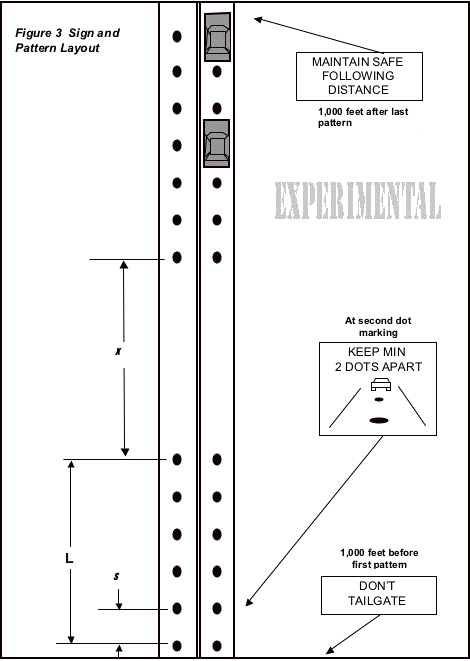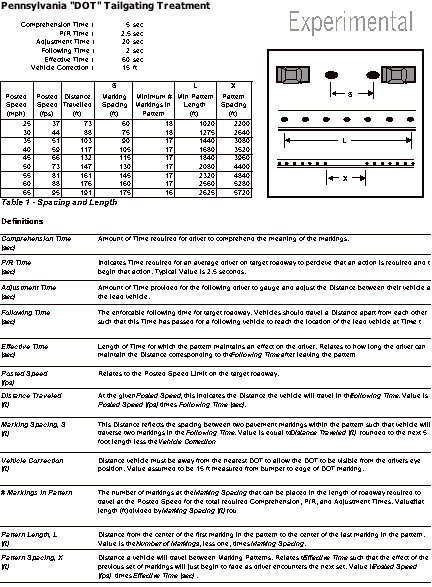Appendix: Guidelines for Installation of Pennsylvania "Dot" Tailgating Treatment
- The "dot" markings are shown to be effective for assisting the motorist in establishing safe following distance. Use this treatment in areas where there is a high concentration of aggressive driving or tailgating-related crashes. Markings are spaced such that safe distance is kept between vehicles when a minimum of two markings separates them. Safe distance is defined based on a two-second following rule. Areas with significant grade differences should generally be avoided.
- Marking – The marking consists of a series of ellipses (dots) marked in all lanes at equal spacing according to the posted roadway speed (see Table 1, Spacing 'S'). Marking is to be centered in the travel lane. The ratio of width to height for the elliptical mark is 1:3 based on standard oblong pavement markings referenced in the MUTCD. Markings should be applied according to Figure 1.
- Spacing – The pavement markings should be placed such that the spacing is according to Table 1. Spacing is based on posted speed for any given roadway.
- Pattern Spacing – The distance between successive series of dots is also based on posted speed and can be found in the Table 1. This distance should be adjusted as appropriate to meet field conditions.
- Signing – There should be placed a minimum of three signs as follows:
- "Don't Tailgate" should be placed 1,000 feet before the first pattern.
- "Keep Min 2 Dots Apart" sign should be placed at the second marking in each set of dots.
- "Maintain Safe Following Distance," sign should be placed 1,000 feet after the last pattern.
For signing layout, see Figure 3. Place signs in accordance with Sign Foreman's Manual, Pub 108.
- Refer to the attached Specification for Epoxy Pavement Marking for selection of material and construction.
- Dot pavement markings can be installed via projects initiated exclusively for this purpose.
Deviation from the above specifications and guidelines may be considered by Districts; however, they require approval by the Bureau of Highway Safety & Traffic Engineering prior to implementation.
Pennsylvania's "DOT" Tailgating Treatment
![]()

| Alternative | A (ft) | B (ft) | Area (sq ft) |
|---|---|---|---|
| Two Lane Highway | 7.5 | 2.5 | 14.71 |
| Interstate | 12 | 4 | 37.68 |
Note: Refer to Guidelines for more information
Figure 1 – Typical Marking

